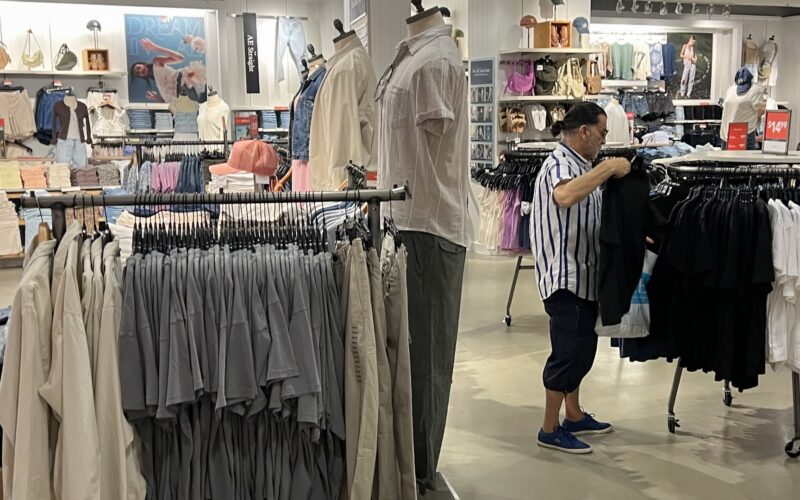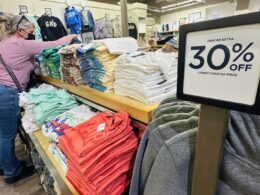A customer shops in an American Eagle store on April 4, 2025 in Miami, Florida.
Joe Raedle | Getty Images
After a bout of panic buying, more consumers are prepared to rein in their spending and live with less, recent studies show. Even President Donald Trump suggested that Americans should be comfortable with fewer things.
“[Americans] don’t need to have 250 pencils,” Trump said on NBC News’ “Meet the Press.” “They can have five.”
According to a study by Intuit Credit Karma, 83% of consumers said that if their financial situation worsens in the coming months, they will strongly consider cutting back on their non-essential purchases.
Over half of adults, or 54%, said they’ll spend less on travel, dining or live entertainment this year, compared to last year, a new report by Bankrate also found. The site polled nearly 2,500 people in April.
“Moving forward, people may not be able to absorb these higher prices,” said Ted Rossman, Bankrate’s senior industry analyst. “It sort of feels like something has to give.”
More from Personal Finance:
How to save on your grocery bill
After UK, China trade deals, tariff rate still highest since 1934
Stagflation is a looming economic risk
Economy is ‘at a pivot point’
While many Americans are concerned about the effect of on-again, off-again tariff policies, few have changed their spending habits yet. Up until now, that is what has helped the U.S. avoid a recession.
Because it represents a significant portion of Gross Domestic Product and fuels economic growth, consumer spending is considered the backbone of the economy.
“Consumers are still spending despite widespread pessimism fueled by rising tariffs,” said Jack Kleinhenz, chief economist of the National Retail Federation. “While tariffs may have weighed on spending decisions, growth is coming at a moderate pace and consumer spending remains steady, reflecting a resilient economy.”
However, now the economy is “at a pivot point,” according to Kleinhenz.
“Hiring, unemployment, spending and inflation data continue in the right direction, but at a slower pace,” Kleinhenz said in a recent statement. “Everyone is worried, and a lot of people have recession on their minds.”
Trump’s tariffs jump started a wave of declining sentiment, which plays a big part in determining how much consumers are willing to spend.
“Any time there is this much uncertainty, people tend to get a little more cautious,” said Matt Schulz, chief credit analyst at LendingTree.
The Conference Boards’ expectations index, which measures consumers’ short-term outlook, plunged to its lowest level since 2011. The University of Michigan’s consumer survey also showed sentiment sank to the lowest reading since June 2022 and the second lowest in the survey’s history going back to 1952.
“The cumulative effects of inflation and high interest rates have been straining households, contributing to record levels of credit card debt and causing consumer sentiment to plummet,” Rossman said.
Tack on the Trump administration’s resumption of collection efforts on defaulted federal student loans and many Americans, who are already under pressure, will suddenly have less money in their pockets.
As it stands, roughly half — 47% — of U.S. adults would not consider themselves financially prepared for a sudden job loss or lack of income, according to recent data from TD Bank’s financial preparedness report, which polled more than 5,000 people earlier this year.
Another 44% of Americans said they think about their financial preparedness every single day.
Source link









